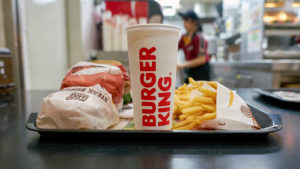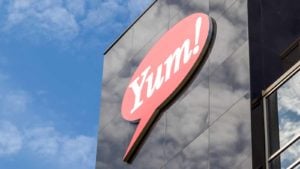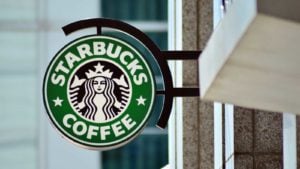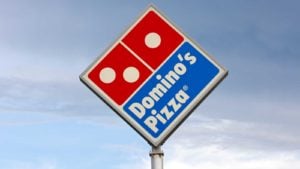The shutdown of non-essential businesses across the United States was a sudden and unexpected shock to the economy.
Of course, given what we knew about the severity of the novel coronavirus, the world had to do anything to stop its spread. But while the service industry was decimated, alongside the tourism and hospitality industries, the re-opening from coast to coast led to a steady rebound in restaurant stocks. The steep discounts in these stocks narrowed ahead of the re-opening.
Companies are still supporting teleworking as they continue running. But industries that require face-to-face interaction, especially in the restaurant business, are set to slowly recover.
A few months ago, the U.S. government approved a monstrously large stimulus package, in part to help consumers pay the rent and buy necessities. The government increased spending as the Federal Reserve eased rates to increase liquidity.
At the time Laura Gonzalez, Associate Professor of Finance at California State University Long Beach, said:
“the production of processed food may not be sustained within months, and the United States could see a disruption in the market of perishable food. That would alter income in other industries because the price of some essentials may increase at a time of lack of liquidity.”
Investors who bought into stocks like Conagra Brands (NYSE:CAG) or Kellogg (NYSE:K) for exposure to the processed and packaged goods market did well. Both stocks are trading near 52-week highs. Similarly, restaurant sector stocks have reduced the steep discounts we saw at the height of the shutdown.
After the U.S. lifted restrictions, investors need to re-evaluate the following seven restaurant stocks after a quarter-long rally.
Restaurant Stocks: Restaurant Brands International (QSR)

Restaurant Brands International (NYSE:QSR) has traded in the $40 to $60 range since 2017. Last summer’s breakout to around $76 proved very short-lived.
The company owns Burger King, a global business that performed well last year. In its last quarter, the company said that it was carefully watching the lockdown unfold in China. But since Burger King accounted for roughly 2% of sales, the company didn’t expect a material downturn in business.
Burger King added $23 billion in sales for QSR, growing 9% from the year before. Popeyes also enjoyed a strong year. Sales grew an impressive 18% in the year. This is due to the launch of that brand’s cult-favorite chicken sandwich.
In effect, QSR noticed the strong demand for this product that Chick-fil-A enjoyed. Management said that “for the vast majority of our guests purchasing the sandwich, we saw that they actually spent more on other products than on the sandwich itself, resulting in very healthy check levels and incredibly valuable awareness and trial.”
This year stands in stark contrast to last year’s strong results. QSR-owned Tim Hortons, a popular chain in Canada, will most certainly report a strong drop in sales after many provinces in the nation imposed a lockdown.
At 17 times earnings and the majority of analysts rating the stock a “buy,” QSR stock is continuing its rebound. Watch out, though. The stock is entering a period of seasonal weakness starting in September:

Chart courtesy of Stock Rover
Stock Rover thinks the fair value is $63.48.
McDonald’s (MCD)

McDonald’s (NYSE:MCD) fell as low as $124.23 in March 2020 only to bounce back over the past few months. The fast-food chain will likely report a strong drop in revenues for the current quarter.
Still, the company adapted to the tougher market conditions by temporarily taking out some items from its menu. This simplified operations and helps lower the workload for its kitchen staff and crew. The burger giant also closed all of its locations in Ireland and the United Kingdom.
McDonald’s experienced a surge in drive-thru volumes. This will not offset the lost business, but should keep its customers getting the service they demand.
After the reopening and subsequent resurgence in coronavirus cases, McDonald’s implemented a mandatory mask requirement for customers. Initial customer traffic may fall, but people will put on a mask to comply with the fast-food chain’s new rules.
Financially speaking, McDonald’s has a healthy balance sheet. Its operating income greatly exceeds its capital expenditures, interest expenses and administrative costs.
To be on the safe side, the company filed a $1 billion borrowing with banks. This will give it a strong cash position and financial flexibility, in case uncertainties worsen due to the pandemic.
Yum! Brands (YUM)

Yum! Brands (NYSE:YUM) held steady at the $100 to $110 level until the coronavirus outbreak halted the economy. But this stock, which pays a dividend yielding ~2%, has seen the light at the end of the tunnel. In its recent 8K filing, the company wrote that “we have seen early signs of sales recovery in markets that were first impacted by COVID-19, although there can be no assurance of continued improvement.”
At the time of filing, Yum forecast same-store sales fell in the mid to high single digits. Beyond the quarter ended March 31, the company is not positioned to give investors a forecast.
In June, the company sued Grubhub (NYSE:GRUB) for allegedly violating a delivery deal. If Grubhub imposes steeper fees, Yum’s profit margins will fall.
To preserve cash, Yum suspended its stock buyback program. Instead, it will reinvest in the company. It will also spend to maximize the health and well-being of its staff while they serve customers.
At a price-to-earnings ratio around 17 times, YUM stock is a good turnaround play for patient investors. On average, analysts have a $97.13 price target on Yum! Brands.
Conversely, readers may assume a 7% discount rate and a modest 2% perpetuity growth rate in a 5-year discounted cash flow growth exit model. In that scenario, YUM stock is worth $84.25. This suggests that investors will want to wait for a dip before holding shares.
Starbucks (SBUX)

Shares of Starbucks (NASDAQ:SBUX) have held to a narrow trading range between $70 and $75 due to the pandemic affecting business. Yet as China ended lockdown in its Hubei province in early April, Starbucks will start to see business bouncing back in the region.
The return of customers is hardly assured. But loyal customers will likely come back as businesses return to normal and people begin commuting to work.
SBUX stock held up well during the March selloff in part because the market expects the business to snap back. This optimism will be undermined if the lockdown plays out longer. This delays the assumption on a return to normal life in China or other countries.
Despite coffee demand trending lower, investors can bet on customer loyalty for premium Starbucks products. The mask wearing requirement at retail locations is a minor inconvenience for customers, but it will also save lives as it minimizes the spread of the virus. This will lead to a recovery in customer traffic.
Analysts have an average price of $81.45 on SBUX stock. Conversely, investors may assume a 5.3% compounded annual growth rate in revenue. This implies SBUX stock is worth $74.
Domino’s Pizza (DPZ)

Domino’s Pizza (NYSE:DPZ) hired around 1,000 more staff across more than 100 stores in Chicago. This signals that the company has a strong understanding of the neighborhoods it serves. By positioning itself as a favorite restaurant option, Domino’s has the opportunity to grow its market share.
Domino’s reported strong second-quarter earnings of $2.99 a share. Revenue grew a solid 13.4% year-ove-year. Domestic same-store sales rose 16.1%. And even though DPZ stock dipped after the earnings report as investors “sold in the news,” buy and hold investors should stay interested.
CEO Jeff Lawrence said its delivery comparable “was also positively impacted by higher order counts in addition to larger order sizes.” As demand accelerated in the middle of the quarter, the company faced minimal demand drop-off.
Internationally, Domino’s benefited from strong ticket growth. 106 consecutive quarters of growth suggests that this stock is worth holding for the long haul.
Chipotle Mexican Grill (CMG)

Chipotle Mexican Grill (NYSE:CMG) shares are close to 52-week highs. Valuations for this popular restaurant are more unfavorable than ever on a price-to-earnings basis. But this stock remains attractive for growth investors.
The company signed a deal with Uber Eats to provide delivery service for its customers. CMG said this partnership will expand delivery and increase communities’ access to “real” food.
Chipotle CEO Brian Niccol said its customer acquisition strategy is working, “so many of these new customers came through our digital business, the bulk of them also signed up for our rewards program.” By embracing the digital economy, the company is finding new customers and influencing their behaviors.
Compared to its peers, the stock is trading above its fair value in a multiples valuation model. The market liked Chipotle’s 40 cent earnings per share on revenue of $1.36 billion in the second quarter. This company is still on my list of restaurant stocks to accumulate as it thrives, regardless of market conditions.
Shake Shack (SHAK)

Shake Shack (NYSE:SHAK) recently withdrew its financial guidance and shifted to a “to-go” model. This led to SHAK stock getting stuck around the $50 level.
Under the new model, customers may order in the restaurant, online at its website, or use the Shack App for pickup. Investors should note that the stock fell into a prolonged downtrend over the last year. Valuations are unfavorable and current headwinds will slow its growth.
To revitalize slumping sales, Shake Shack is expanding, with plans to have 55 Shacks in China by 2030.
“In late June, the Company announced an expansion of its existing partnership with licensee Maxim’s Caterers Limited, to open a minimum of 15 additional Shacks across South China by 2030, including locations in Shenzhen, Guangzhou, Fuzhou and Xiamen.”
Investors can’t predict when the economy will return to normal. Even so, strong brand awareness in its many markets in the U.S. will help Shake Shack’s business snap back. For now, its integrated delivery strategy with Grubhub will add value and generate further business leads.
Chris Lau is a contributing author for InvestorPlace.com and numerous other financial sites. Chris has over 20 years of investing experience in the stock market and runs the Do-It-Yourself Value Investing Marketplace on Seeking Alpha. He shares his stock picks so readers get original insight that helps improve investment returns. As of this writing, the author did not hold a position in any of the aforementioned securities.
